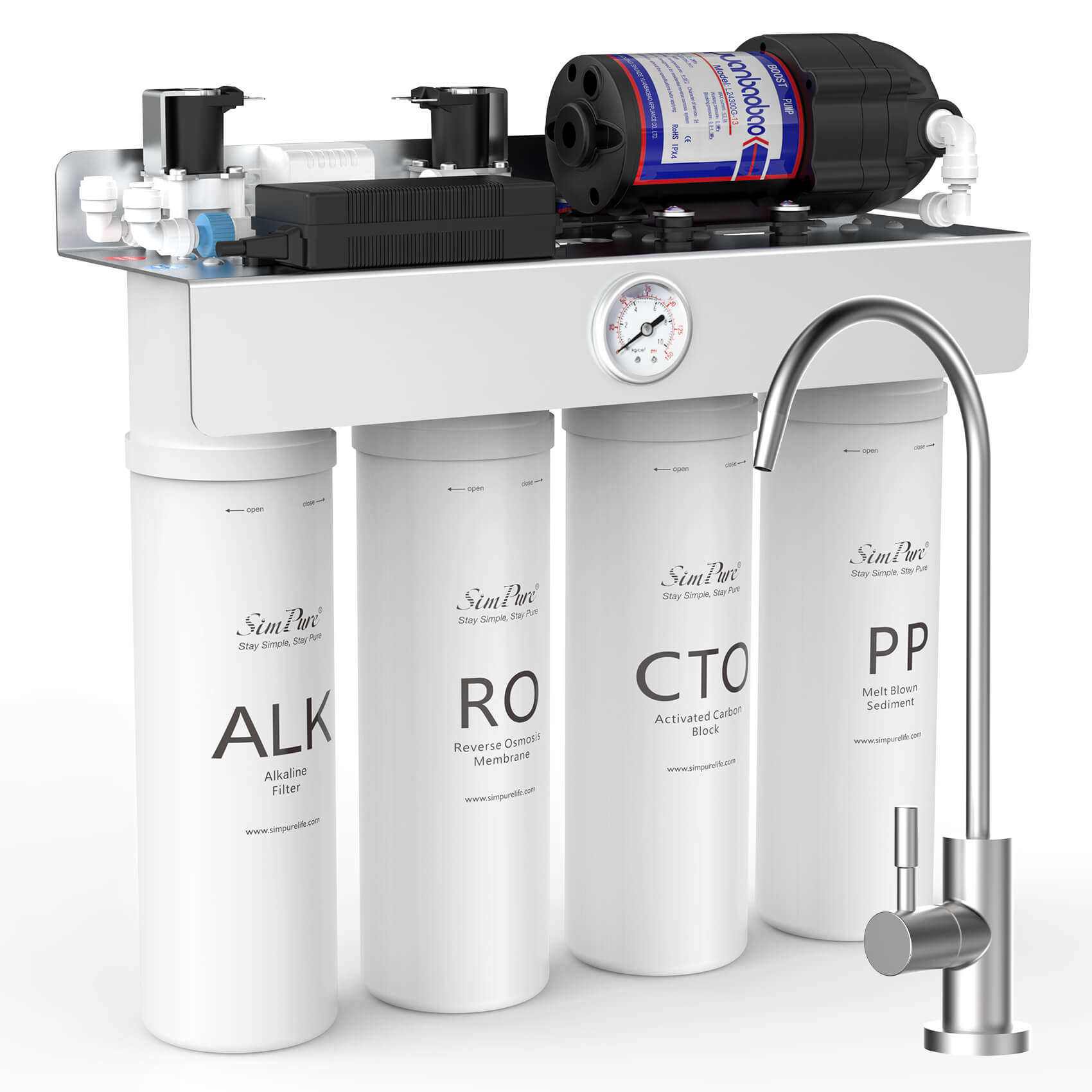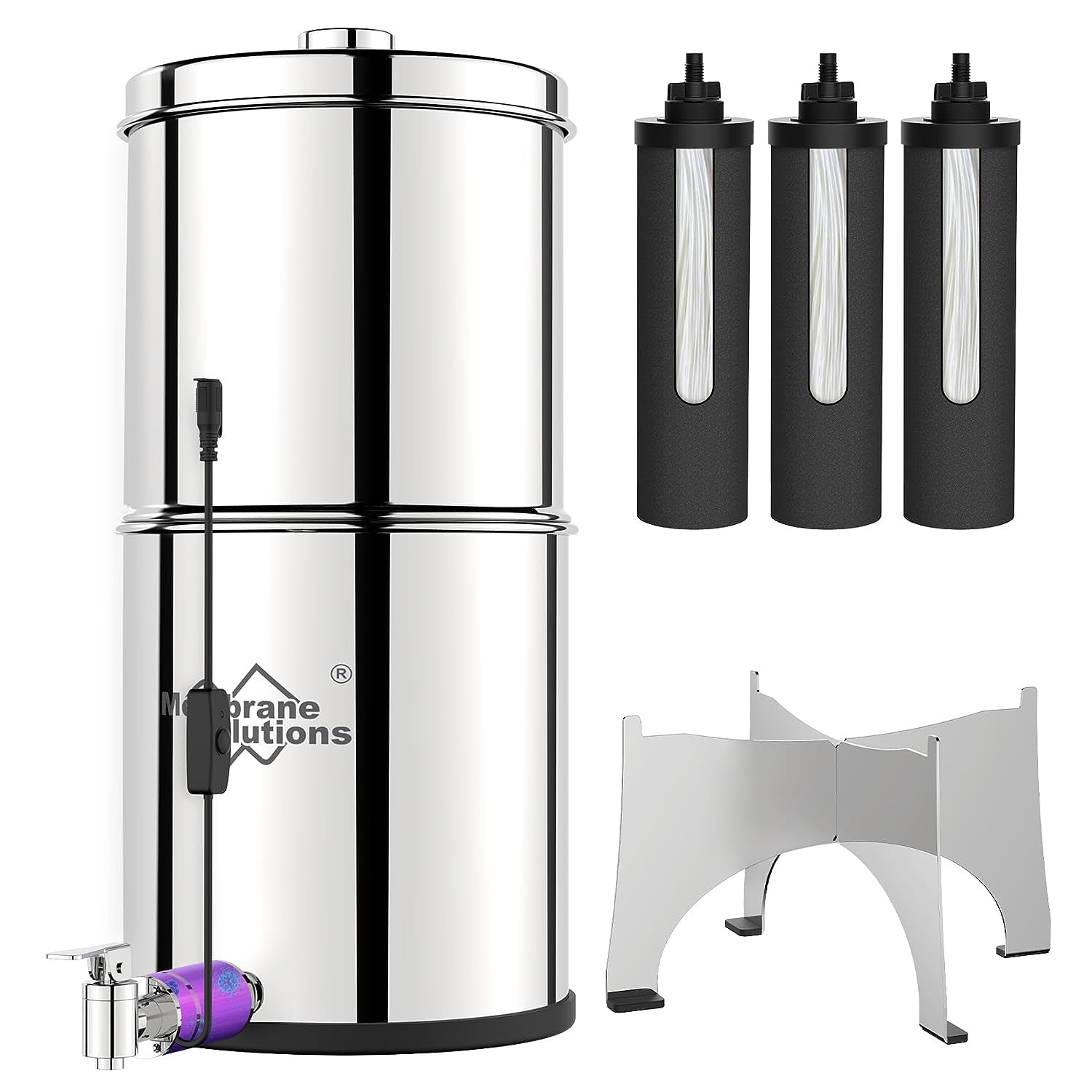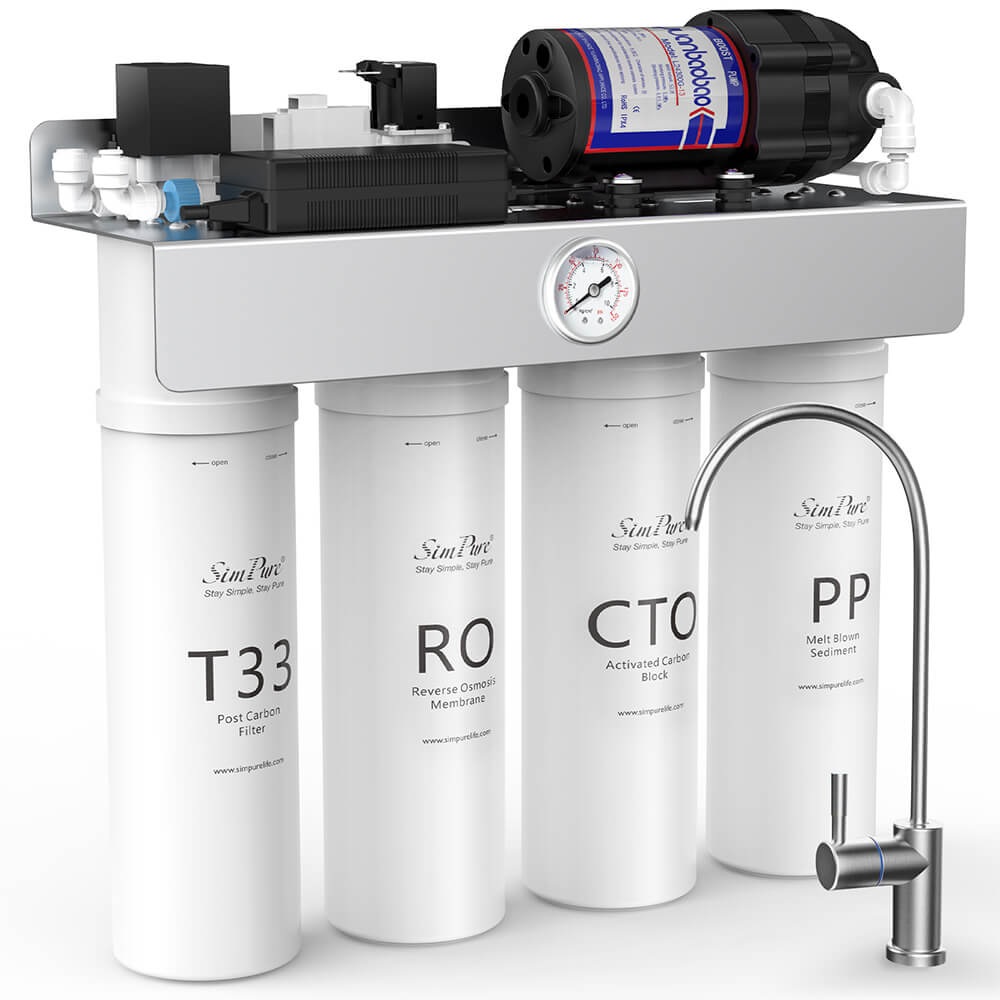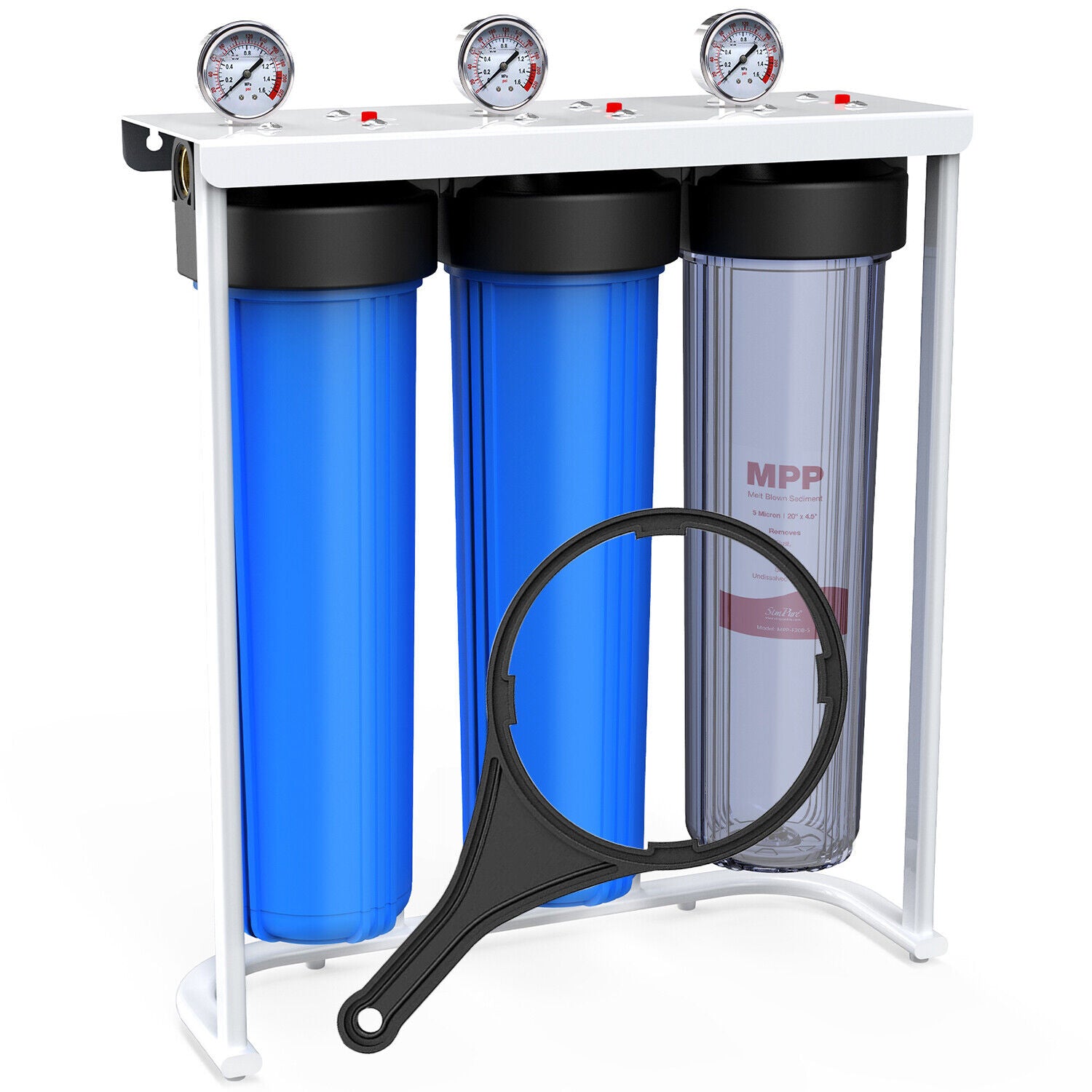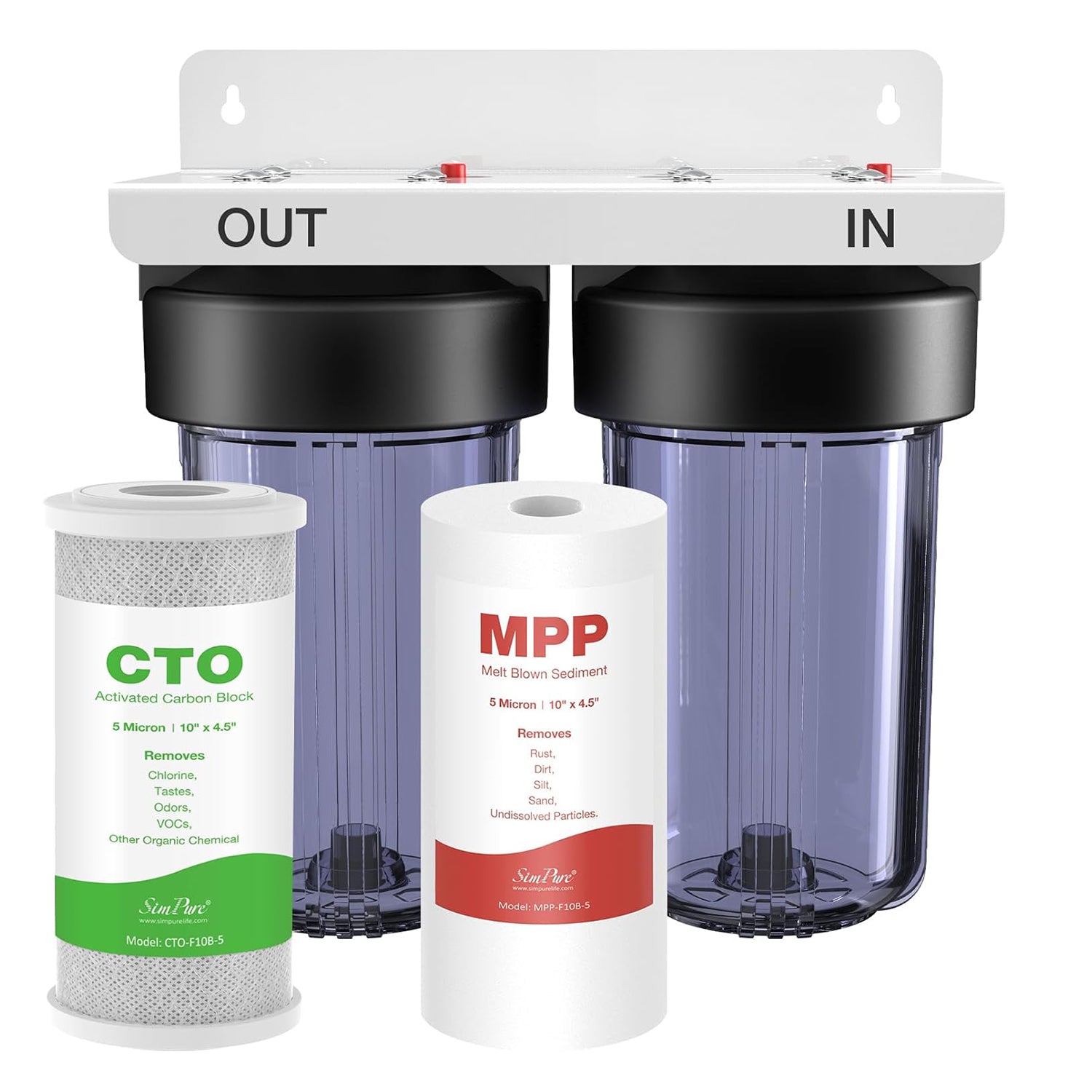Tannins are organic compounds found in a variety of sources, including water. They can have a negative impact on water quality and are often responsible for the unpleasant taste and odor in drinking water. So, how to remove tannins from water? If you're looking to remove tannins from your water supply, there are a variety of methods to choose from, ranging from chemical filtration to biological processes. In this article, we'll explore the different methods of removing tannins from water and help you choose the best approach for your needs.
1. Knowing Tannins Before Discussing How to Clear Tannins from Water
Before we get into the methods of how to remove tannins from water, we should know more about tannins. Tannins are a class of astringent, polyphenolic compounds found in various plants and plant-derived products. They are known for their ability to bind to proteins and other organic compounds, causing them to precipitate and form complex, insoluble substances. Tannins are commonly found in plants such as oak, chestnut, and quebracho, and are used in the production of leather, ink, and dyes. In water, tannins can contribute to a bitter or astringent taste and discoloration. They also have the potential to impact the effectiveness of certain water treatment processes and can interfere with the taste and odor of drinking water.
2. The Importance of Getting Rid of Tannins from Water

To answer the question of how to remove tannins from water, we should first know the importance of removing tannins from water. Removing tannins from water is important to improve the quality, taste, and odor of the water supply, protect plumbing and appliances, and protect the environment. Let's see the detailed reasons why we should remove tannins from water.
I. Removing tannins from water can improve taste and odor
Tannins can give water a bitter, astringent taste and an unpleasant odor, making it unappealing for drinking and cooking. By removing tannins, the water will have a fresher taste and odor, making it more suitable for drinking and cooking.
II. Clearing tannins from water can improve water quality
Tannins can interfere with the effectiveness of certain water treatment processes and can impact the overall quality of the water supply. Removing tannins can help ensure the water meets standards for drinking and other uses.
III. Getting rid of tannins from water can promise protection of plumbing and appliances
Tannins can cause discoloration in water and can contribute to the buildup of mineral deposits in plumbing and appliances, reducing their efficiency and lifespan. Removing tannins can help protect these systems and extend their lifespan.
IV. Take tannins out of water can protect the environment
Tannins can have an impact on aquatic life and the natural ecosystem if they are not properly treated. Removing tannins from water can help ensure the protection of the environment and maintain healthy aquatic systems.
3. So How to Measure Tannin Levels in Water?
Measuring tannin levels in water is important to assess the effectiveness of tannin removal processes and to ensure the water meets standards for quality and safety. This is a must to decide the methods of how to remove tannins from water, The method chosen will depend on the desired level of accuracy and the available equipment and resources. Measuring tannin levels in water can be done through several methods, including:
Visual Assessment: A visual assessment can provide an approximate measure of tannin levels in water. This can be done by observing the color and clarity of the water, as well as any discoloration or sedimentation that may be present.
UV-Vis Spectrophotometry: This method uses a spectrophotometer to measure the absorbance of light at specific wavelengths, providing a quantitative measure of tannin levels in water.
Total Phenolic Content (TPC) Assay: This assay measures the total phenolic content in a sample, which can be used as an indicator of tannin levels in water. The TPC assay typically involves the reaction of the sample with a reagent, followed by measurement of the absorbance of the resulting solution.
HPLC Analysis: High-performance liquid chromatography (HPLC) is a method that separates and quantifies the components in a sample, including tannins. This method provides a highly accurate and sensitive measure of tannin levels in water.
4. How to Remove Tannins from Water? -3 Ways: Chemical, Physical, and Biological Methods
When it talks to the topic of how to get rid of tannins in water, we have searched much methods for you to clear tannins out of water, from the chemical methods, physical methds to the biological methods. Let us see these 3 ways one by one.
1. How to take tannins out of water?-Chemical Methods
Coagulation-Flocculation: This process involves the addition of a coagulant, such as aluminum sulfate or iron salts, to the water to promote the formation of flocs, or clumps, of tannins and other suspended particles. The flocs can then be removed through sedimentation or filtration.
Oxidation: Tannins can be oxidized by adding an oxidizing agent, such as hydrogen peroxide or potassium permanganate, to the water. The oxidation reaction causes the tannins to break down into smaller, less complex compounds, which can then be removed through filtration or sedimentation.
Adsorption: Tannins can be removed from water through adsorption onto activated carbon or other adsorbent materials. The tannins are attracted to the surface of the adsorbent material and are held there through a process called adsorption.
Ion Exchange: This method involves the use of an ion exchange resin to remove tannins from water. The resin contains ion exchange sites that can attract and hold tannins, while allowing other ions to pass through.
Reverse Osmosis: Reverse osmosis (RO) is a method that uses a semi-permeable membrane to remove tannins and other contaminants from water. The water is forced through the membrane, leaving the tannins and other contaminants behind.
2. How to remove tannins from water?-Physical Methods
Filtration: Filters can be used to remove tannins from water by trapping the tannins in the filter media. Filters can be made of materials such as sand, gravel, and activated carbon, and can be used alone or in combination to remove tannins.
Sedimentation: Tannins can be removed from water through sedimentation, which allows the tannins and other suspended particles to settle to the bottom of the water, where they can be removed.
Evaporation: Tannins can be removed from water through evaporation, which causes the water to boil and turn into steam, leaving the tannins behind. This method is typically used in industrial settings and requires large amounts of energy.
Ultraviolet Light: Ultraviolet (UV) light can be used to remove tannins from water by breaking down the tannins into smaller, less complex compounds. UV light systems use a combination of a UV light source and a special filter to remove the tannins from the water.
Drying: Tannins can be removed from water by drying the water, which causes the tannins to evaporate along with the water. This method is typically used in industrial settings and requires large amounts of energy.
3. How to clear up tannins from water?-Biological Methods
Microbial Degradation: Certain microorganisms, such as bacteria and fungi, can break down tannins through a process called degradation. The microorganisms consume the tannins as a source of food and convert them into simpler, less complex compounds, which can then be removed from the water.
Phytoremediation: Phytoremediation is the use of plants to remove pollutants, including tannins, from water. Certain plants, such as willows and poplars, have a natural ability to absorb and break down tannins, making them effective for tannin removal from water.
Bioreactors: Bioreactors are systems that use microorganisms to break down tannins in water. The microorganisms are grown in a controlled environment, such as a tank or column, and are supplied with the tannins in the water as a source of food.
Algae: Algae can also be used to remove tannins from water. Algae consume the tannins as a source of food and convert them into biomass, which can then be removed from the water through sedimentation or filtration.
These biological methods are generally considered to be more environmentally friendly than chemical or physical methods, as they do not produce harmful by-products or require large amounts of energy.
5. Comparison of These Different methods of Removing Tannins in water
When it comes to removing tannins from water, there are several methods to choose from, including chemical, physical, and biological methods we mentioned above. Each of these methods has its own advantages and disadvantages, and the most effective method will depend on the specific needs and conditions of the water supply.
Chemical methods for removing tannins from water, such as oxidation and coagulation, are typically quick and efficient, but can be costly and produce harmful by-products.
Physical methods, such as filtration and sedimentation, are less expensive and environmentally friendly, but may not be as effective as chemical methods for removing tannins from water.
Biological methods, such as microbial degradation and phytoremediation, are considered to be the most environmentally friendly, as they do not produce harmful by-products or require large amounts of energy.
Ultimately, the best method for removing tannins from water will depend on several factors, including the tannin levels in the water, the desired outcome, and the available resources and budget. A combination of methods may also be used for maximum efficiency and effectiveness. It is recommended to consult with a water treatment professional to determine the most effective and efficient method for removing tannins from your water supply like home-use drinking water or aquarium water, or fish tank .
Best Recommendation for Removing Tannins at Home from Water: Using Reverse Osmosis System Water Filter
From the above content, we know that reverse osmosis systems remove tannins from water by using a semi-permeable membrane. The RO process works by applying pressure to water, forcing it through the semi-permeable membrane and leaving contaminants, including tannins, behind. The membrane has tiny pores that allow water molecules to pass through, but reject larger particles, such as tannins, salts, and other dissolved solids.
As the water is forced through the membrane, the tannins and other contaminants are left behind and flushed away. The purified water is then collected on the other side of the membrane. The RO process is effective in removing tannins from water because tannins are larger particles that are too large to pass through the membrane.
It is important to note that while RO systems are effective in removing tannins, they should be preceded by a pre-treatment system, such as sediment filtration, to remove larger particles and organic matter that could clog the RO membrane. Regular maintenance, such as cleaning the RO membrane, is also essential for ensuring the longevity and efficiency of the RO system. Overall, reverse osmosis is an effective method for removing tannins from water and is often used in residential and commercial water treatment systems.
In conclusion, removing tannins from water is important to ensure that the water is safe for consumption and use. For the questions of how to remove tannins from water, there are several methods available for removing tannins, including chemical, physical, and biological methods, with each having its own advantages and disadvantages. Among them, reverse osmosis (RO) is an effective method for removing tannins. It is recommended that readers consider installing an RO water filter system in their homes to ensure that their water supply is free from tannins and other contaminants. With the use of an RO system, you can be confident in the safety and quality of the water that you and your family are consuming. For more info about RO system, you can click the below picture.






